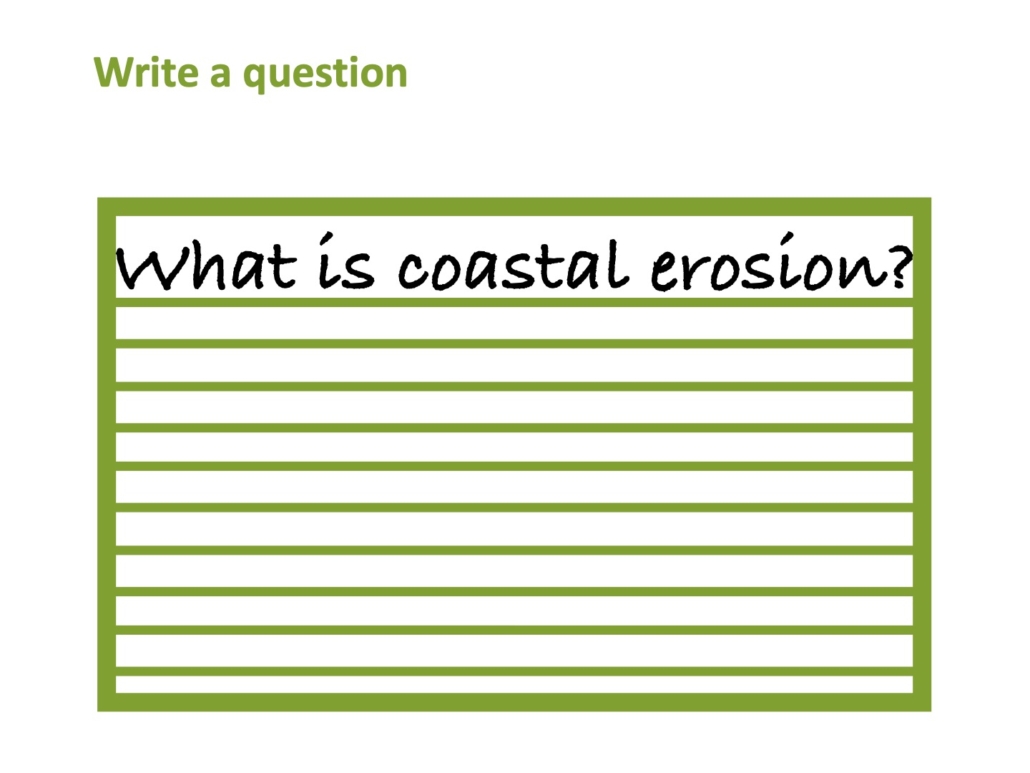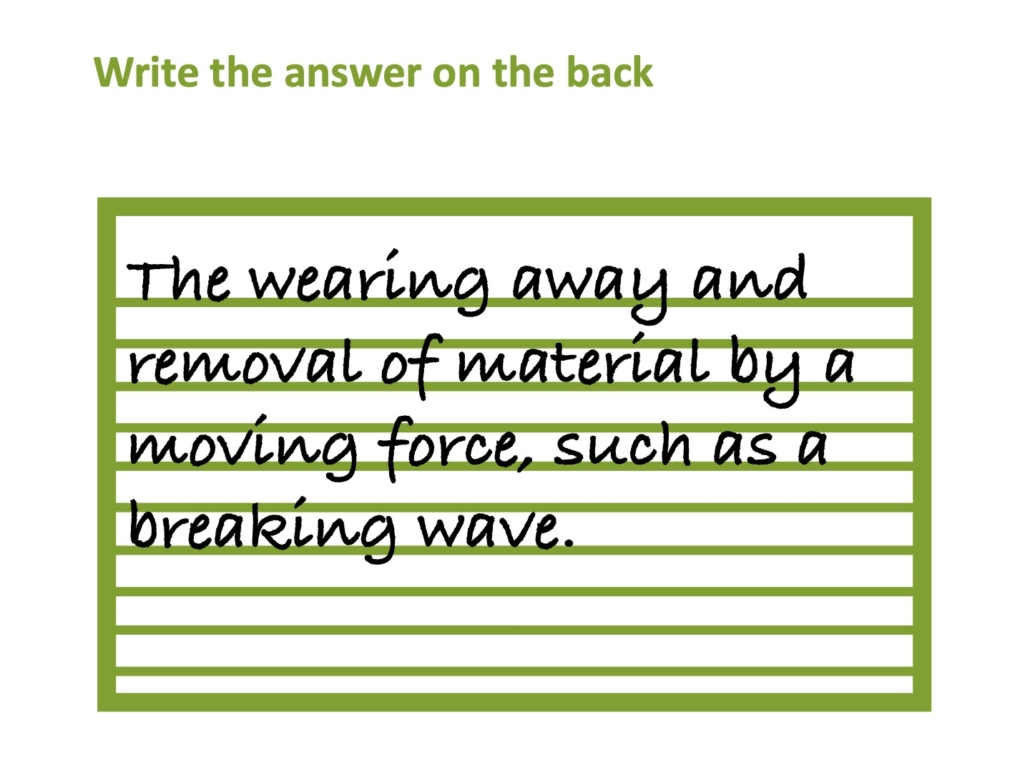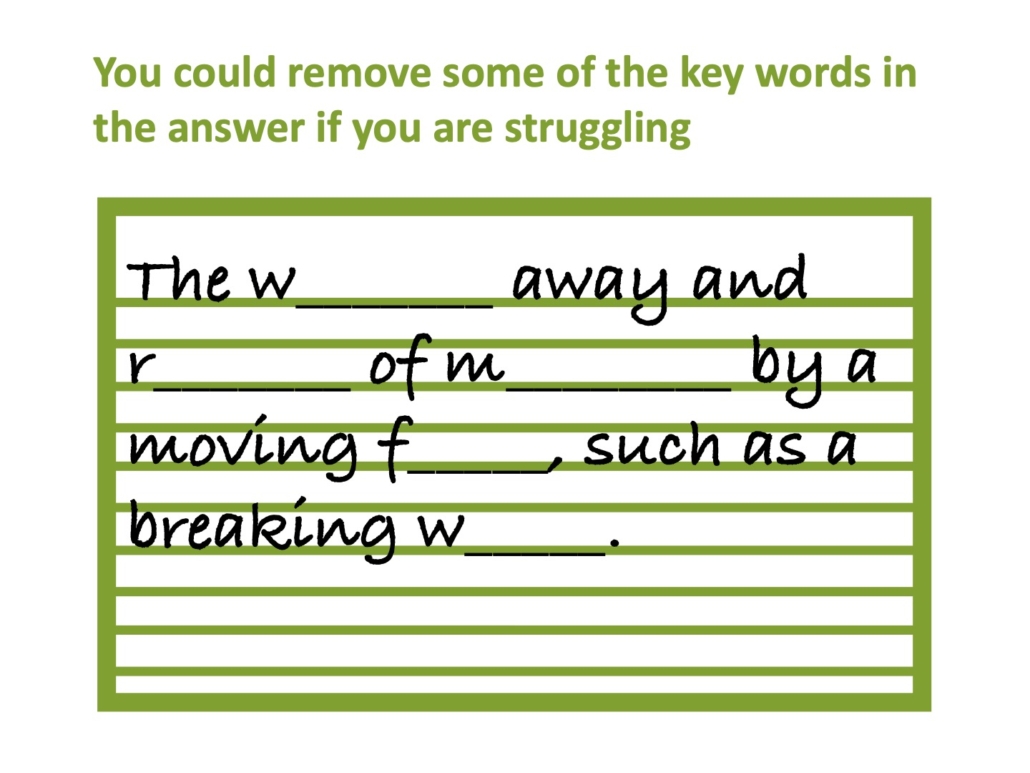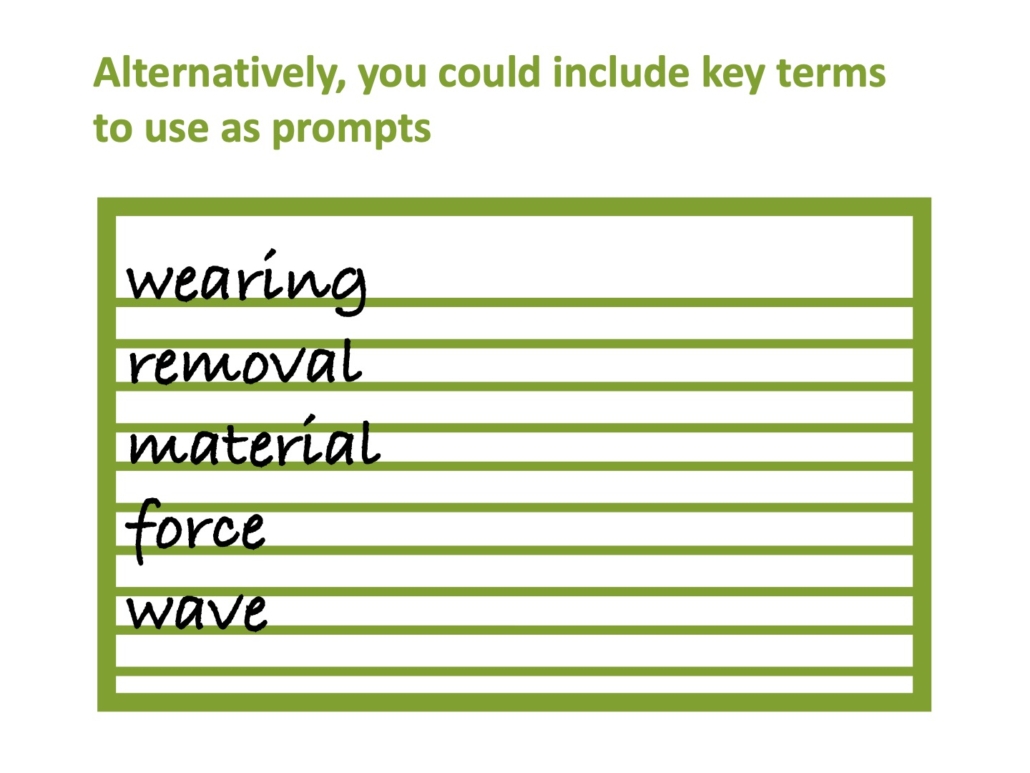Flashcards
Flashcards are a common revision tool used by students. Used effectively, flashcards are one of the most effective ways for motivated learners to study and retain information.
How to create flashcards
Don’t include too much information on your flashcard. Keep it simple. Write a question on the front of your revision card, then the answer on the back. Your revision cards can then be used for quizzing.
Flashcards can also be used for diagrams. Below are two flashcards that could be used for revising coastal transportation. But which is the most effective?
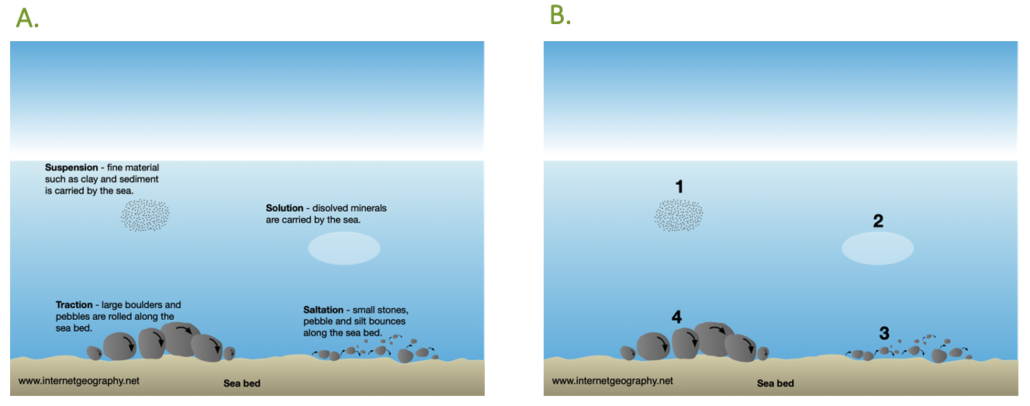
Flashcard diagrams
To encourage active recall we’d recommend flashcard B. The diagram shows the main processes of transportation so when revising you can use it to identify and describe the four processes rather than passively reading the information shown in A.
What makes an effective set of flashcards?
Once you’ve created a set of flashcards start off by dividing them somehow. If you’re using paper flashcards, this could be in the form of small stacks (wrapped by a rubber band) and “meta-stacks” that are divided into groups. For example, for coasts or rivers, you could have a pile for processes. Your initial groupings could be by textbook chapter or topic, for example, and then you could slowly start changing your organization system to include sub-divisions like “I know these already” and “I need to keep working on this pile”.
I’ve made my flashcards, now what?
Creating the flashcards was the easy part! Now you need to use your flashcards effectively to help retain the information. We recommend you use The Leitner Flashcard System to overcome the forgetting curve and make your learning stick.
Moving forward
Grab yourself some index cards and get started! You could also take a look at some of the examples of keyword revision cards we’ve developed on Internet Geography.
Revision
Further Revision Resources


